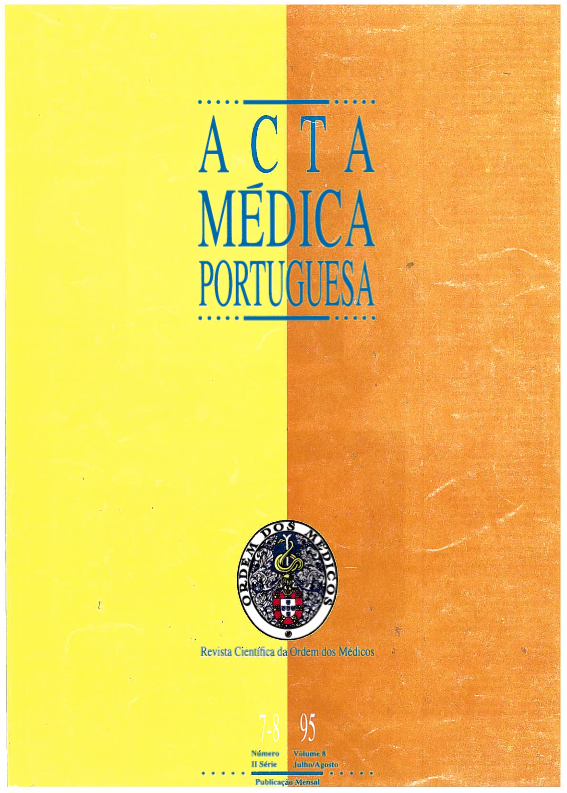Sistemas enzimáticos eritrocitários e seu potencial antioxidante nas grávidas submetidas a indução do trabalho de parto com PGE2 intracervical.
DOI:
https://doi.org/10.20344/amp.2728Resumo
Our purpose is to correlate, the apgar score of the new-borns from induction of labour (IL) with Prostaglandin E2 (PGE2) endocervical gel, and the oxidative environment of the pregnant woman during labour, studying biochemical markers of the erythrocytes. PGE2 is responsible for the regulation of the vascular response in pregnancy, namely for the vasoconstriction caused by Angitensin II. The production of Prostaglandins in vivo depends on mechanisms related to free radicals of oxygen (FRO). The production of FRO is enhanced in normal pregnancy. We have studied two erythrocytic enzymes and plasmatic concentration of PGE2 before and after the IL. Those enzymes are oxireductases-the transmembrane reductase (RTM) and the metahemoglobin reductase (MHR). Their function is to prevent the effects of the FRO on cellular biomolecules namely the endothelium and the red blood cells. This prevention of oxidative stress can facilitate the deformability of the erythrocytes, so these cells can easily transpose the small vessels and bind the oxygen to the tissues. The activity of those enzymes can be modulated by PGE2 used in the IL. We have not found significant variations on the activity of RTM after IL. The activity of MHR was enhanced with statistical significance, 30 minutes after the induction. This enhancement of activity can be a mechanism to prevent the oxidative stress of the induction of labour.Downloads
Downloads
Como Citar
Edição
Secção
Licença
Todos os artigos publicados na AMP são de acesso aberto e cumprem os requisitos das agências de financiamento ou instituições académicas. Relativamente à utilização por terceiros a AMP rege-se pelos termos da licença Creative Commons ‘Atribuição – Uso Não-Comercial – (CC-BY-NC)’.
É da responsabilidade do autor obter permissão para reproduzir figuras, tabelas, etc., de outras publicações. Após a aceitação de um artigo, os autores serão convidados a preencher uma “Declaração de Responsabilidade Autoral e Partilha de Direitos de Autor “(http://www.actamedicaportuguesa.com/info/AMP-NormasPublicacao.pdf) e a “Declaração de Potenciais Conflitos de Interesse” (http://www.icmje.org/conflicts-of-interest) do ICMJE. Será enviado um e-mail ao autor correspondente, confirmando a receção do manuscrito.
Após a publicação, os autores ficam autorizados a disponibilizar os seus artigos em repositórios das suas instituições de origem, desde que mencionem sempre onde foram publicados e de acordo com a licença Creative Commons









